Every climbing season, a dedicated team of doctors stations themselves at Emergency Clinics Everest Base Camp, not to conquer the summit, but to provide essential medical care at the Everest ER clinic. While their efforts may not always make it to climbers’ Instagram feeds, they play a crucial role, especially for the local workers.
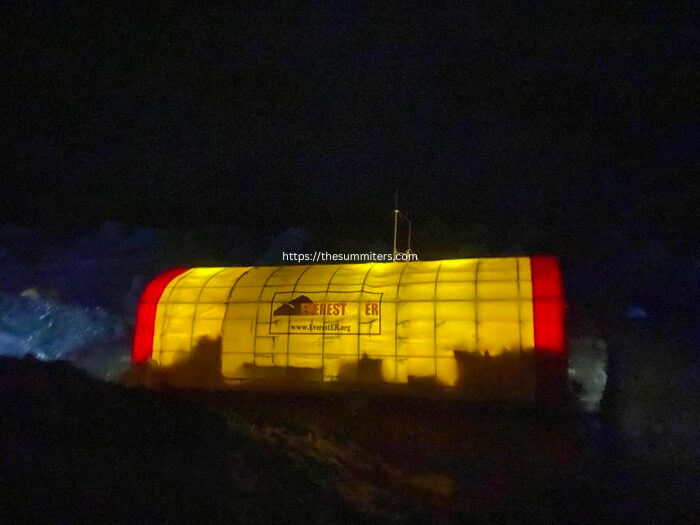
Dr. Sanjeeb Bhandari, co-medical director of the clinic, explains their mission: “We’re here to offer medical assistance to anyone in need. Our services are free for Nepali people, but climbers have to cover the costs of consultations and medications.”
Each year, they attend to a significant number of patients, ranging from 450 to 650. Most suffer from altitude-related issues such as difficulty breathing, fluid buildup in the lungs or brain, frostbite, and occasional fractures.
The clinic’s roots trace back to 2003 when American Luanne Freer and her Western counterparts founded it. Over time, Nepalese doctors also joined the effort.
Dr. Bhandari describes the clinic’s evolution: “We started with just a small tent and basic supplies. Now, we have a larger, more equipped tent with tools like ECG machines and ultrasound devices. The advent of helicopter rescue drastically changed our operations. Previously, patients had to be carried down manually, often on stretchers or even by horse. But now, helicopters expedite evacuations, transporting patients to safety much faster.”
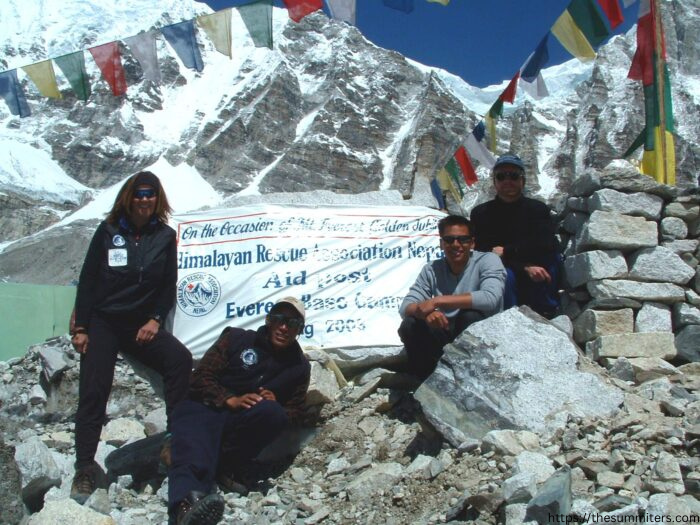
This season, the clinic is under the leadership of Dr. Gregory Stiller from the U.S., alongside Nepalese doctors Shreyasi Karki and Nishant Joshi. They’re joined by Lakpa Norbu Sherpa, a seasoned expert in long-line rescues. Presently stationed in Pheriche, they’ve already begun assisting patients grappling with altitude sickness.
Why Volunteer? at Emergency Clinics
Dr. Joshi, currently stationed in Pheriche but en route to Everest ER later this week, shared his reflections with ExplorersWeb. Having worked at the Pheriche aid post and Gosaikunda Lake last year, this season marks his debut at the Base Camp clinic.
“Working at high altitudes exposes you to illnesses rarely encountered elsewhere,” he explained. It also sheds light on the daily struggles faced by people here. It’s truly an eye-opening experience.
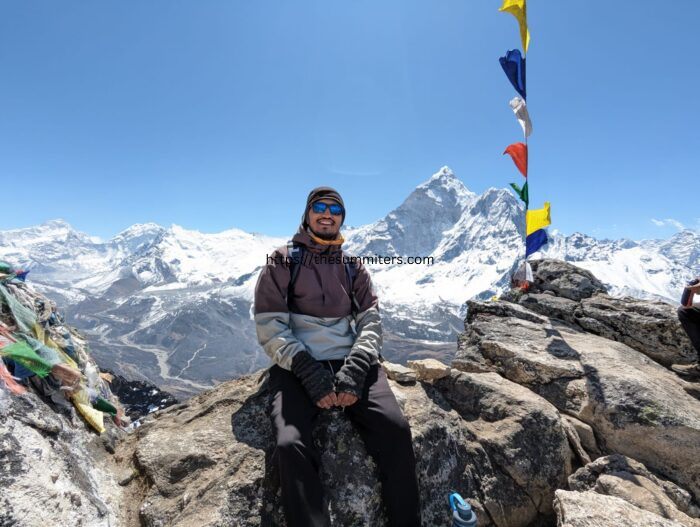
During the previous season, the clinic witnessed a record-breaking 50 cases of HAPE, the highest in its 50-year history. Dr. Joshi emphasized that almost 45 of these cases were among Nepalese guides and porters.
He underscored the significance of charging fees to six insured trekkers, typically reimbursed by their insurance, to cover the treatment costs for all 45 guides and porters.
“It’s incredibly fulfilling to help purely for the sake of helping,” Joshi added.
He recounted a poignant moment with a Sherpa woman who expressed her gratitude by offering prayers for him at the monastery.
I’ve never experienced such a profound connection between doctor and patient elsewhere. That’s why I felt compelled to return.
Dr. Joshi noted that their primary focus is on local people, who are already strained from strenuous labor and thus more susceptible to illnesses.
I often worked night shifts, caring for patients transported to us at midnight from higher altitudes. Providing treatment under the starry sky and illuminated mountains, I felt privileged to save lives through volunteering in such a place.
Expanding Beyond Everest
In addition to the field hospital at EBC, the Himalayan Rescue Association (HRA) operates aid posts on two of Nepal’s most popular trekking routes. One is located in Pheriche, along the path to Everest Base Camp, and the other in Manang town, situated in the Annapurna region.
During August, we also set up a temporary health camp at Gosainkunda Lake (Langtang), situated at 4,200m, to cater to the 20,000 pilgrims who visit over four days. Many of them are Nepalese nationals with limited knowledge of high-altitude illnesses.
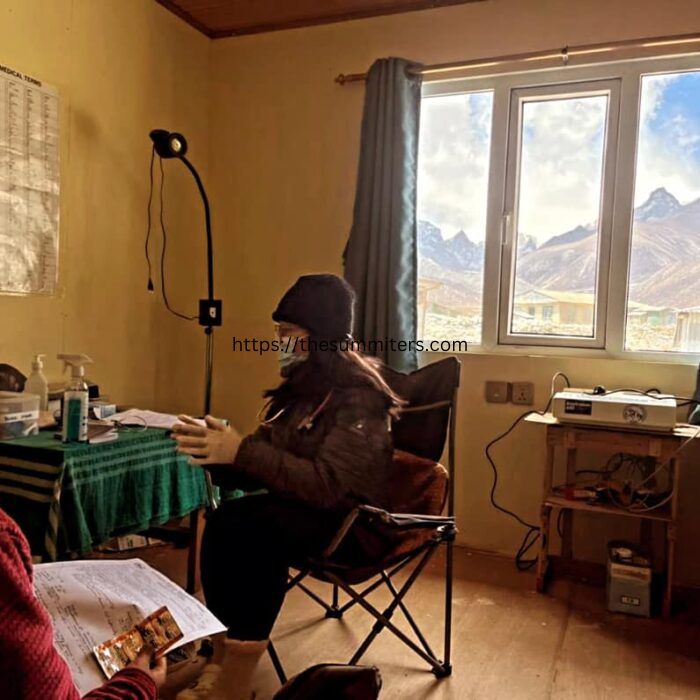
As a non-profit organization, HRA relies on donations, mainly from individuals, supplemented by some support from the Nepalese government. If their funding increases in the future, they plan to extend their services to other base camps, particularly the popular Manaslu during the fall season.
While field workers respond to medical emergencies, they emphasize the importance of prevention over treatment. Therefore, they conduct educational training sessions at their Kathmandu office for expedition teams preparing for their journeys.
From a medical prevention perspective, educating climbers is paramount, explain the HRA staff. Thanks to our efforts to educate climbers and the EBC community, we’ve observed a decrease in the frequency of illnesses through preventive measures.
At the Forefront of Health
The team at the aid post and Everest ER clinic stay busy dealing with emergencies. But beyond that, they serve as the first responders for medical assistance, understanding the various health challenges faced by those working at high altitudes, not just during climbing seasons but throughout their lives.
We encounter a range of chronic health issues at the clinic daily, such as gastritis, heart conditions, hypertension, and diabetes. For many of these issues, we refer patients to specialized centers for appropriate care, explained Joshi.
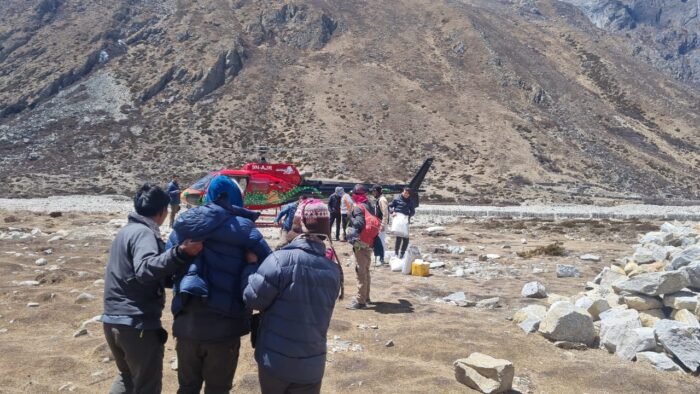
The clinic also addresses mental health concerns. We often see cases of panic attacks, conversion disorder, and patients struggling with depression. We provide counseling, assess the severity of their symptoms, and either offer treatment or refer them to appropriate resources, Joshi added.
In a few weeks, we’ll catch up with Dr. Joshi for an update on the medical situation at Everest Base Camp.”